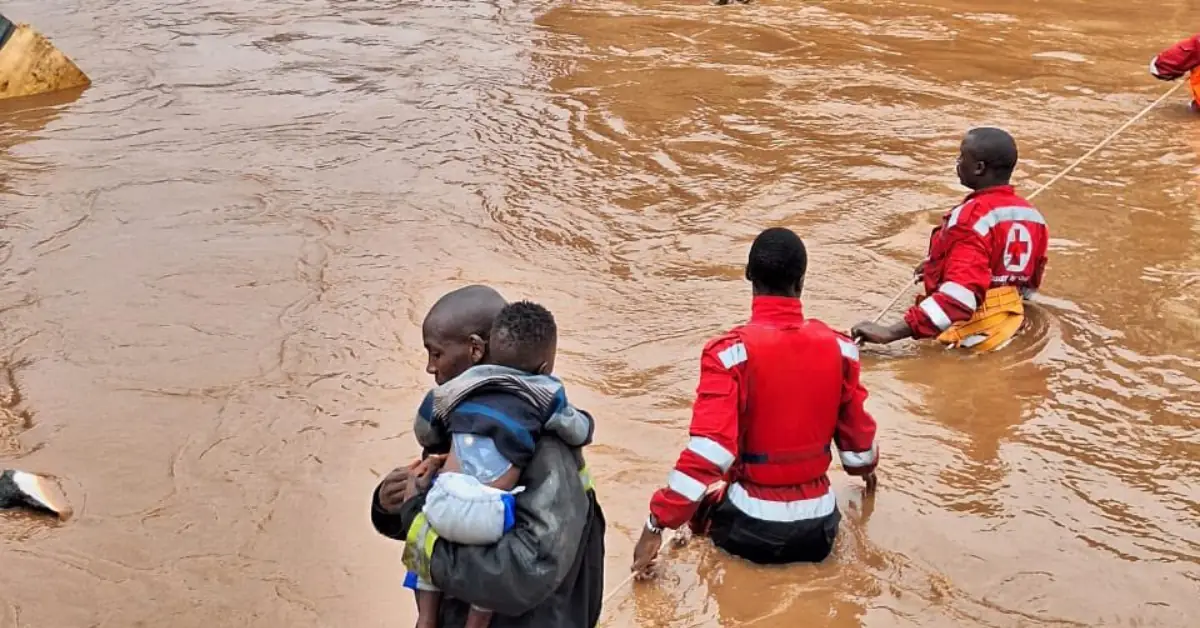Kenya nairobi flooding – Kenya’s Nairobi Grapples with Devastating Floods, a compelling narrative that delves into the causes, consequences, and resilience strategies employed in the face of this recurring crisis. This comprehensive analysis unveils the complexities of urban flooding, shedding light on its far-reaching impact on infrastructure, economy, and social well-being.
With a blend of data-driven insights and real-life stories, this article offers a nuanced understanding of the challenges and opportunities surrounding flood management in Nairobi. From government initiatives to community-led responses, the article explores the diverse efforts aimed at mitigating the risks and building resilience against future flooding events.
Flooding in Nairobi, Kenya

Flooding is a recurrent problem in Nairobi, Kenya’s capital and largest city. The city’s rapid population growth, inadequate drainage infrastructure, and environmental degradation have contributed to the severity and frequency of flooding events.
Causes of Flooding in Nairobi, Kenya
The primary causes of flooding in Nairobi include:
- Inadequate drainage infrastructure:Nairobi’s drainage system is overwhelmed by the volume of rainwater during heavy rainfall events. Many drainage channels are clogged with debris and poorly maintained.
- Rapid urbanization:Nairobi’s population has grown rapidly in recent decades, leading to increased impervious surfaces (e.g., buildings, roads) that reduce water absorption and increase runoff.
- Environmental degradation:Deforestation and the destruction of wetlands have reduced the city’s natural capacity to absorb and store rainwater.
Extent of Flooding in Nairobi, Kenya, Kenya nairobi flooding
Flooding in Nairobi has become more frequent and severe in recent years. In 2022, heavy rains caused widespread flooding, affecting over 500,000 people and displacing tens of thousands.
The most flood-prone areas in Nairobi include:
- Informal settlements in low-lying areas
- Areas near rivers and streams
- Areas with poor drainage infrastructure
End of Discussion
As Nairobi continues to grapple with the challenges of urbanization and climate change, the need for sustainable and effective flood management strategies becomes paramount. This article serves as a call to action, urging policymakers, urban planners, and community leaders to prioritize flood resilience in the city’s development agenda.
By embracing innovative solutions, fostering community engagement, and investing in infrastructure that can withstand the test of extreme weather events, Nairobi can emerge as a model of resilience, safeguarding its citizens and securing its future prosperity.
Commonly Asked Questions: Kenya Nairobi Flooding
What are the primary causes of flooding in Nairobi?
Nairobi’s flooding is attributed to a combination of factors, including heavy rainfall, poor drainage systems, encroachment on wetlands, and inadequate urban planning.
How has flooding impacted Nairobi’s infrastructure?
Flooding has caused significant damage to Nairobi’s infrastructure, including roads, bridges, and buildings. It has also disrupted transportation and communication networks, leading to economic losses.
What role do communities play in flood resilience in Nairobi?
Communities in Nairobi have adopted various coping mechanisms to deal with flooding, such as building flood barriers, establishing early warning systems, and organizing community clean-up efforts. Community organizations also play a crucial role in promoting flood preparedness and response.




